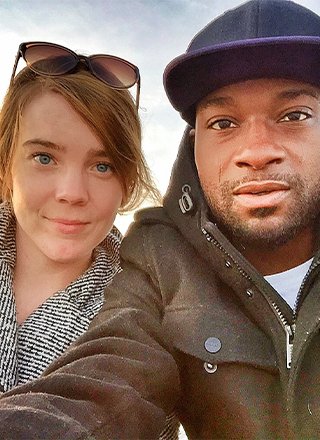With the Supreme Court’s October 2020 term ending, the wall separating church and state still stands despite dogged attempts by the Religious Right to tear it down. Justice Amy Coney Barrett, who many feared would quickly transform the court into an ultraconservative stronghold, has so far moved more slowly to change Supreme Court religious-freedom precedent. But it is unclear whether this tentativeness will last.
Barrett, along with fellow conservative Justice Brett Kavanaugh, demurred on what religious extremists viewed as a prime opportunity to decisively alter church-state precedent. Both justices held back in Fulton v. City of Philadelphia, joining a majority opinion by moderately conservative Chief Justice John G. Roberts that, on narrow grounds specific to the fact pattern of the case, invalidated Philadelphia’s decision to stop funding a religious foster-placement agency that refused to serve same-sex couples.
In Fulton, the majority refused to decide whether to overrule a critical precedent, Employment Division v. Smith, which makes it more challenging for religious organizations to use the First Amendment’s Free Exercise Clause to impose their beliefs on others. Although Barrett, joined by Kavanaugh, wrote an opinion expressing disapproval of the Smith decision, they left the three-decade-old precedent intact for now, mainly because they were unsure what legal test should replace the rule adopted in Smith — that laws that are neutral with respect to religion and generally applicable do not trigger heightened scrutiny under the Free Exercise Clause.
Barrett, Kavanaugh and Roberts have also joined the court’s three more liberal justices in the majority more often than hardline conservative Justices Neil M. Gorsuch, Samuel A. Alito, and Clarence M.Thomas have. The court seems to have less of a 6-3 split than, as an article in The Economist put it, a 3-3-3 split, divided between the more liberal justices, the more cautious conservative justices and the three hardline justices “itching to hasten a conservative revolution.”
Despite the semblance of a 3-3-3 split, the high court retains a decidedly conservative majority. Religious extremists and their lawmaker allies have capitalized on this conservative majority and likely will continue to do so, especially if the more cautious conservatives change their tune. Barrett has only been on the bench for eight months, which is hardly enough time to illuminate how she will act going forward.
It was also the addition of Barrett to the court that inspired religious groups to more aggressively challenge public-health orders designed to mitigate the COVID-19 pandemic. Barrett cast the deciding vote in Roman Catholic Diocese of Brooklyn v. Cuomo, which invalidated a New York order that limited the size of religious and other gatherings, marking a diametric reversal from two decisions issued while the late Justice Ruth Bader Ginsburg was still on the Court that had upheld such orders.
Barrett did exercise mild restraint in two subsequent COVID-19 health-order cases, declining to join calls by highly conservative justices to block a Kentucky order that temporarily closed in-person private schools and to eliminate nearly all restrictions that California had imposed on religious gatherings. But that restraint evaporated this past April in Tandon v. Newsom, when Barrett joined a 5-4 opinion that invalidated California’s restrictions on prayer meetings in homes. The Tandon decision made several broad legal pronouncements that are in tension with prior Supreme Court precedents and are viewed by some observers as eviscerating the Smith precedent. Religious extremists are already attempting to use Tandon to argue for religious exemptions, using their religious beliefs in a manner that would harm numerous Americans who do not share their extremist dogmas.
Barrett’s past, as a report created by Americans United before her confirmation hearing details, also shows why it makes more sense to be worried about her presence on the Court rather than be cautiously optimistic. In previous law-review articles, Barrett has shown a lack of respect for precedent, especially the landmark Roe v. Wade decision that established women’s right to choose whether to end a pregnancy. Those writings and a record of supporting restrictions on reproductive rights should cause trepidation about the outcome of Dobbs v. Jackson Women’s Health Organization, a pivotal abortion case that the court will hear next term.
Barrett has yet to be the devastating ultraconservative force on the Supreme Court bench that some have feared. She has knocked consequential bricks out of the wall of separation but has not bulldozed it — at least, not yet. As cases on abortion, gun rights and other hot-button issues are slated for the Supreme Court’s next term, skepticism of Barrett’s relatively cautious conservative is well warranted. By this time next year, it will be much clearer whether Barrett intends on demolishing the wall of separation during her Supreme Court tenure.
Photo: Amy Coney Barrett being sworn in during her Senate confirmation hearings. Screenshot from NPR.


